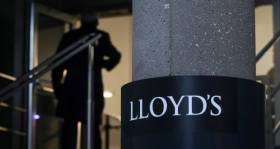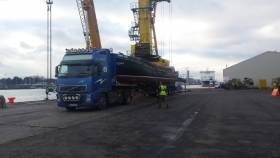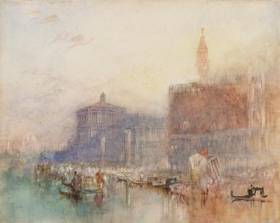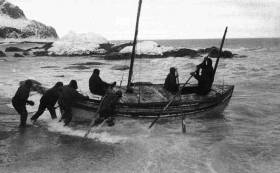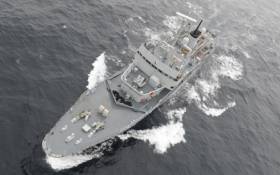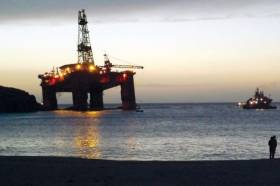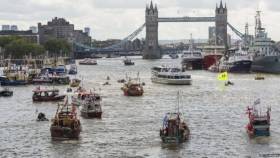Displaying items by tag: news update
Lloyd’s of London Actively Examine Dublin as Option for EU Base
#LloydsofDublin? - The option by Lloyd’s of London according to The Irish Times in setting up a subsidiary in Dublin is actively been examined, as it finalises its plan to deal with the move to Brexit.
The insurance market is due to bring a proposal to its members next month to establish a subsidiary in an EU country to safeguard its access to European markets and Dublin remains on the shortlist as the final decision approaches.
The arrival of Lloyd’s, the insurance market with a history stretching its origins in marine insurance back more than 300 years, would pose particular issues for the Central Bank. Lloyd’s members would have to agree to inject new capital into the venture, to create a fully-fledged subsidiary.
However the structure of Lloyd’s, with risk taken on by various syndicates of members, rather than the company, would require a different regulatory oversight to a normal insurance operation.
Lloyd’s was one of the first major city companies to say it would move part of its operations out of London in the wake of the Brexit vote. Its chairman, John Nelson, said that London’s status as a global insurance hub was at risk after the referendum vote. Lloyd’s quickly started looking for a base for an EU subsidiary and it was reported in December that five centres were on the shortlist. Malta is also thought to be on the list.
For more click here and an opinion piece on Afloat.ie of Dublin's Docklands as a relocation base for sectors of the London banking scene leading to potential spin-off of maritime based activity on the Liffey based mostly on moored craft.
On a related note to London's River Thames is where MBNA Thames Clippers (see newbuild orders) is operated by one of the UK's largest credit card issuers, MBNA.
#EscapeRoom - The ‘escape room’ business initially an Asian craze has arrived in Ireland and appears to be booming at the moment.
The latest addition to the sector was launched in Dublin yesterday afternoon – and its backers are hoping to stand out from their competitors by offering something a little different: Ireland’s first ‘escape boat’.
“We’ve done a lot of research on escape rooms,” Ronan Brady of escapeboats.ie told TheJournal.ie at Dublin Port as he watched the soon-to-be-refitted Zorg Ella barge being lowered into the Liffey.
I’ve travelled around Europe doing a lot of them and we’ve done all the ones in Dublin – and we think there’s room for huge improvement.
Brady, who has teamed up with Irish Ship and Barge Fabrication for the new venture, hopes to have the attraction up and running on Grand Canal Quay, near the Bord Gáis Energy Theatre, by spring.
They’ve spent months sourcing props for the 101-year old ship and thinking of ideas for the different rooms on board, he said.
To read more on this new craze, click here.
#MarineArtist – This month of January is dedicated to the master of seacapes Turner with an exhibition of prints at the National Gallery of Ireland, Dublin, writes Jehan Ashmore.
The British painter Joseph Mallord William Turner (23 April 1775 – 19 December 1851) was synonymous with seascapes scenes of shipwrecks in tempestuous seas. Both brushstroke of sea and sky are captured by the master known as the ‘Painter of Light’ in which he challenged the style of the old masters by trailblazing in the technique and subject matter.
Turner has proved to be so popular with such evocative scenes along with landscapes that have captured the public imagination.
The National Gallery is showing the popular Vaughan Bequest of Turner’s watercolours in the print gallery.
Visitors will be able to view a selection of Turner’s 1807 Liber Studiorum prints divided into categories such as marine, architectural and epic pastoral.
As an English Romantic landscape painter, watercolourist and printmaker, Turner’s style is said to have paved the foundation for Impressionism. His prolific works of 19,000 oils, watercolours and drawings including elevated landscape painting that rose to his eminence rivalling history painting.
Turner was considered controversial for his day and unlike many artists then he proved to be very successful.
Most of his works were bequeathed to the British nation and the majority are held in the National Gallery and at the Tate Britain also in London. The venue at Millbank is also where the 'Tate Boat' connects downriver to the Tate Modern at Bankside operated by MBNA Thames Clipper fleet (see order newbuilds).
Lecture
This Sunday, 15 January, at the National Gallery of Ireland a lecture ‘Preparing Turner: behind the scenes of the Turner exhibition’ is to be presented by Rebecca de Bút at the gallery's Conservation Department.
Likewise of the exhibition the free lecture of almost an hour begins at (15.00hrs) in the Lecture Theatre.
Booking is not necessary. For a link to the NGI click here.
Lecture: Ernest Shackleton's Story - A Hundred Years Later
#LectureShackleton -An illustrated lecture: "Ernest Shackleton's Story - A Hundred Years Later" by Kevin Kenny will take place on Thursday 12 January 2017 (20:00hrs) at the Poolbeg Yacht & Boat Club, Ringsend, Dublin 4. There will be an entry fee of €5 in aid of the RNLI.
100 years ago, Shackleton led one of the greatest ever feats of seafaring with a six person crew in a 22 foot open boat; it is even more astounding that half of the crew was Irish.
Kevin will tell Shackleton’s inspiring story, his family, his character, his expeditions, and his strong Irish connections. Bring warm clothes – we have to cross the Antarctic Circle five times!
About the Lecturer: As a teenager, Kevin Kenny bought a secondhand copy of Treasure Island, only to stumble across a pagemarker from Ernest Shackleton to Jacobs thanking them for supplying biscuits to his Nimrod expedition. Shackleton was the right person in the right place for Kevin, and has been a travelling companion since.
Shortly afterwards, Kevin became involved in an initiative in Athy Co. Kildare which was using Shackleton as a basis for building pride in local heritage. Since then, Athy has been to the fore in reclaiming Shackleton for Ireland. Shackleton’s character had lent itself to a wide range of projects, ranging from the internationally acclaimed Shackleton Autumn School to a transition year leadership/teamwork programme.
Kevin learned his sailing, and made many friends, through Glenans at Collanmore and Baltimore. Anyone with an interest in sailing cannot fail to be interested in the heroic age of exploration and the significant contribution made by Shackleton and other Irish players.
#HMSillustrious - The Royal Navy’s former and final ‘Invincible’ aircraft carrier HMS Illustrious which made a rare call to Dublin in recent years departed UK waters for the last time yesterday bound for a Turkish shipbreakers yard, writes Jehan Ashmore.
HMS Illustrious was launched in 1978 but commissioning of the aircraft carrier notably took place after the Falklands War or 'conflict' with Argentina as it was also known. The carrier became synonymous given the vital role of the RAF Harrier Jump-Jet aircraft. In more recent years the aircraft-carrier was scaled down to that of only carrying helicopters.
The third of the ‘Invincible’ class carrier sailed from the UK premier naval base of Portsmouth bound for Falklands in the South Atlantic. Likewise a departure from the Hampshire port was repeated for the final time yesterday albeit under tow on a delivery voyage set for the Mediterranean Sea. A Turkish shipbreaker will dismantle the ship for recycling.
The veteran vessel of 22,000 gross tonnage had over a 32 year career taken part in global conflicts and humanitarian rescue missions. In doing so the ‘Lusty’ as she is referred by crew has clocked up 900,000 thousand miles until retired following decommissioning in 2014.
A pair of ‘Queen Elizabeth’ aircraft carriers are been built in Scotland with other yards in the UK contributing modular sections. Among them Babcock Marine & Technology, the north Devon shipbuilders of the Irish Naval Service OPV90 ‘Beckett’ /Playwright sisters. So far they total three ships with the commissioning naming ceremony of LE William Butler Yeats in Galway held in October.
HMS Illustrious follows the leadship class namesake and HMS Ark Royal which together were sold for scrap overseas. Despite an open competition held over a two year timeframe that sought to save the ship or retain part of the aircraft carrier for heritage purposes in the UK, such attempts to keep the ship in home waters failed.
The Ministry of Defence deemed proposals by some to convert the ship as a museum or hotel as too expensive.
LE Aisling As Museum Considered In Government Proposal
#AislingsFuture - A decommissioned Naval Service ship may be turned into a museum in Galway, writes The Connacht Tribune.
The idea of using the LÉ Aisling as a visitor attraction in the city, has been floated with Government.
Paul Kehoe, Junior Minister at the Department of Defence, this week said the request is “under consideration”.
The ship, which had been twinned with Galway City for almost 20 years, has travelled 628,856 nautical miles, the equivalent of travelling around the world more than 32 times.
It was decommissioned at a ceremony in Galway Harbour in June after 36 years of service to the State.
At the time, City Councillor Pearce Flannery (FG), the deputy mayor, suggested it could be used as a floating museum in Galway Harbour or off Salthill.
Minister Kehoe this week said he would soon make a decision as what to do with the LÉ Aisling. To read more click here.
Dutch 'Walrus' Class Submarine Driven Away by Russian Navy in Eastern Mediterranean
#Submarines – A Dutch Navy submarine which Afloat.ie covered in departing Cork Harbour on Monday is a ‘Walrus’ class submarine, one in which was driven away two days later by Russian warships in the eastern Mediterranean Sea.
A Russian defence ministry spokesman Maj Gen Igor Konashenkov said two Russian navy destroyers spotted the Walrus-class submarine on Wednesday while it was 11 nautical miles away from the Admiral Kuznetsov aircraft carrier and its escorting ships, reports the Associated Press.
The destroyers had tracked the submarine for more than an hour, using anti-submarine helicopters, before forcing it to leave the area, he said. The spokesman added that such “clumsy” attempts to manoeuvre close to the Russian squadron could have resulted in an accident. For more on this story published in The Irish Times, click here.
As previously reported at the ‘Our Maritime Heritage Conference’ held in Belfast last month, Afloat.ie first learnt the Royal Navy’s HMS Duncan was forced to abandon a scheduled visit to the city. Instead the Type 45 destroyer, part of a NATO quartet diverted to the English Channel to ‘shadow’ an eight-strong Russian Navy flotilla notably led by flagship aircraft carrier Admiral Kuznetsov bound for Syria.
The giant 58,000 tonne and powerful Admiral Kuznetsov, the Russian Federation’s sole aircraft carrier was accompanied by nuclear-powered Peter the Great, a missile cruiser.
It was only last weekend that HMS Duncan, one of the Royal Navy’s most modern and powerful destroyers which is affiliated with Belfast finally called to the city along with frigates from Germany, Spain and Portugal. The call followed reports that Russian submarines in the Irish Sea in recent weeks were tracked by the Royal Navy.
As previously highlighted by Afloat’s WM Nixon, the naval presence of Admiral Kuznetsov which drew much attention as the aircraft carrier belched black smoke while passing the famous White Cliffs of Dover. The aging carrier constructed between 1982 and 1992 has always been regarded as a bit of a jinxed ship with such a history of engine breakdown that she never goes anywhere without her own personal tugboat in attendance, just to be sure to be sure.
According to Ships Monthly's September issue, it would seem Admiral Kuznetsov will finally receive more detailed attention to her troublesome engines as the giant aircraft carrier is scheduled to have a major refit in 2017. The ageing aircraft carrier has not been extensively modernised since entering service more than a quarter century ago.
Next year’s refit is primarily to focus on upgrading the flight deck equipment so to improve the launch and recovery rate of aircraft. The aircraft currently deployed in the naval deployment mission to Syria involve a combination of composite air wing fighter craft as well as helicopters.
UK Immigrant Controls Could Shift to Irish Ports to Avoid 'Hard Border'
#IrishBrexitPorts- Irish ports and airports is where the UK are proposing to transfer frontline immigration controls to, writes The Irish Independent in measures to avoid enforcing a ‘hard border’ between the North and the Republic.
Northern Ireland Secretary, James Brokenshire, has said that London and Dublin will work to strengthen Ireland’s external borders to prevent illegal migration to the UK. The move would come into effect once the UK leaves the European Union.
Speaking to The Guardian, Mr Brokenshire said there was now a “high level of collaboration on a joint programme of work” between Ireland and Britain. “We have put in place a range of measures to further combat illegal migration working closely with the Irish government,” he said.
“Our focus is to strengthen the external border of the common travel area [CTA], building on the strong collaboration with our Irish partners.” He also stressed that Brexit would not destabilise Northern Ireland’s power-sharing institutions, and would not provide dissidents with a propaganda boost.
“There is no reason to think that the outcome of the referendum will do anything to undermine the rock-solid commitment of the UK government and the people of Northern Ireland to the settlement set out in the Belfast agreement and its successors," he added.
Questions over the north-south border have been rampant since the UK voted to leave the EU, with fears that border controls would have to be put in place to control immigration.
Such measures could be seen as a violation of the Good Friday agreement. But shifting the focus of immigration controls to Rosslare Europort and Dublin Airport could help to avoid such a violation.
The proposed measures would be mainly aimed at non-Europeans wishing to enter the common travel area between Ireland and Britain.
For more the newspaper has a report here.
Tugboats Refloat Oil Rig that Grounded Off Isle of Lewis
#OilRig - Tugboats from Smit Salvage have tugged the 17,000-tonne Transocean Winner free during high water levels and will be taken Broad Bay on the Isle of Lewis, Scotland until it can be transported to a repair facility.
#GeldofThamesClash - Sir Bob Geldof and Nigel Farage reports the BBC News have traded insults in a nautical battle on the Thames over the EU referendum.
Mr Farage led a flotilla of fishing boats up the Thames (trawlers occupying RMS St. Helena's recent historic Pool of London mooring off HMS Belfast) to urge Parliament take back control of British waters.
But his Brexit armada was greeted by a rival Remain fleet carrying Sir Bob.The rock star yelled that the UKIP leader was "no fisherman's friend".
Mr Farage accused Sir Bob of "mocking" impoverished fishermen. Reality Check: How would Brexit affect fishing?
Follow the latest news on the BBC's referendum live page
The UKIP leader's flotilla, organised by Fishing for Leave, left the Kent port of Ramsgate early on Friday and reached Westminster during Prime Minister's Questions at 12:30 BST.
A handful of dinghies and other vessels bearing In flags sought to "intercept" the Leave flotilla as it passed under Tower Bridge, with the vessel carrying former pop star Sir Bob playing the song "The In Crowd" over loud speakers.
There were reports of brief, light-hearted skirmishes, including the exchange of hose fire and a police launch got involved to keep them apart on the Thames outside Parliament while Prime Minister's Questions took place inside.
Addressing Mr Farage over a PA system as his boat, the Sarpedon, pulled alongside the boat carrying the UKIP leader, Mr Geldof called Mr Farage a "fraud".
"Here are the facts about fishing. One, Britain makes more money than any other country in Europe from fishing. Two, Britain has the second largest quota for fish in Europe after Denmark. Three, Britain has the third largest landings. Four, you are no fisherman's friend.
"You were on the European Parliament Fishing Committee and you attended one out of 43 meetings."
For much more on the clash of personalities on old father Thames, click here.


























